The Bell & Ross BR 03-92 Radiocompass (Live Pics & Price)
The latest piece in the Flight Instruments collection recreates a vintage aircraft’s navigational radio compass.
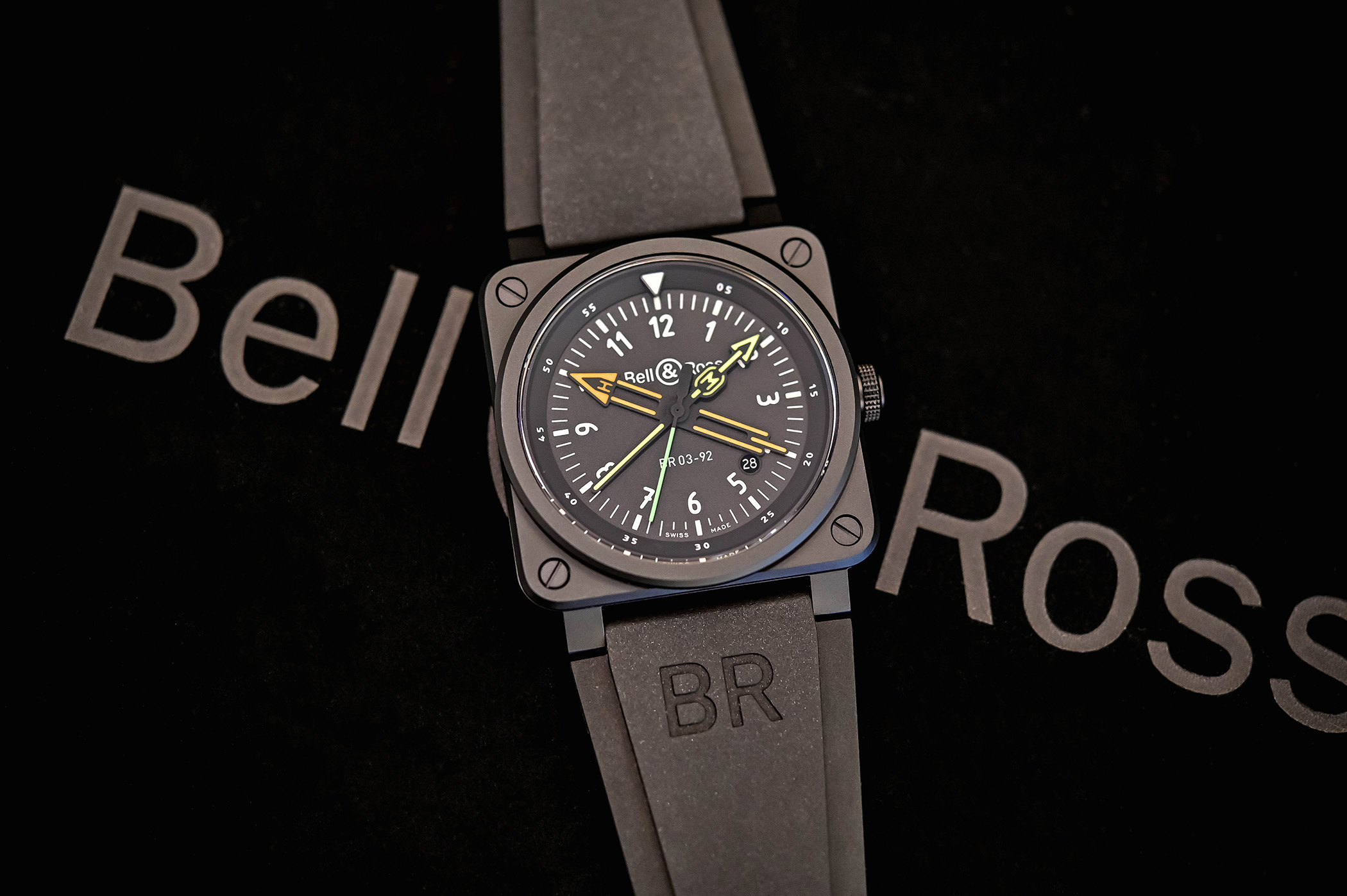
Parisian brand Bell & Ross is well known for the circle-in-a-square aesthetic modelled after clocks in vintage cockpits, starting with the iconic BR01. The Flight Instruments collection goes a step further with themed dials that resemble actual flight instruments, from radar to Head Up Display (HUD). The latest Radiocompass looks like a radio compass (hence the name), which is an onboard radio receiver that guides pilots at night or during reduced visibility via beacons on the ground. The aircraft’s position and direction are clearly defined with old-school analogue hands, which are reproduced on the Radiocompass dial. Don’t worry if you’re not a pilot, as the Bell & Ross BR 03-92 Radiocompass clearly indicates the time.
The name “radio compass” can be a bit confusing as it doesn’t use the Earth’s magnetic field (north magnetic pole) for navigation. Strategically placed radio stations drive this compass, and it was first tested in 1920 – US Navy pilots used the technology to guide a seaplane to a target ship 100 miles offshore. It was the dawn of radio navigation, although the concept was first proven at the turn of the last century. Early pilots used landmarks and even roads to navigate, but navy pilots were limited to buoys (if there were any), possible landmarks, memory and intuition. During this first test, the USS Ohio was within a 100-mile radius of Norfolk, Virginia, on America’s east coast. A radio station on the ship allowed the “blind” twin-engine aircraft to find it with a simple receiver and pointer, and the plane flew back to Norfolk via a land-based radio station. Today, it seems a bit archaic with advanced radar and global positioning systems, but this revolutionised civilian and military aviation a century ago. There are planes flying today that still use this simple and reliable navigation method.
The case of the BR 03-92 Radiocompass has a manageable size of 42mm (square) and 10.4mm in height. Comparable models are 46mm, so this is wearable for a variety of wrists. Unlike its steel counterparts, the case is matte black ceramic. A sapphire crystal with an anti-reflective coating protects the round dial, completing the circle-in-a-square design that mimics the radio compass that inspired the watch. Four exposed screws at each corner really hammer home the instrument panel vibe, while the caseback is solid with information/specs printed in a no-nonsense military style. The narrow, knurled crown is also black, as is the rubber strap. The steel pin buckle even has a black PVD coating, so this piece is as stealthy as it gets.
The matte black dial really steals the show with an accurate representation of an analogue radio compass display. It has three circles of white print, starting with large Arabic numerals for the hours. They’re arranged in a targeted way, turned towards the dial’s centre like a traditional instrument for navigation. They also use isonorm typography, a simple and clean font created in 1980 and popular for technical charts and related applications. A detailed minute track circles above the hours, while Arabic numerals for the seconds are printed on an outermost angled flange. And to remind you that this is indeed a watch, a round date window sits between 4 and 5 o’clock.
Complementing the dial layout are unique hands that nail the radio compass aesthetic. The large, openworked hour hand is black with orange inlays and has a triangular pointer with an H for hours. The orange lines are broken in the centre to create two branches. The minute hand is narrow with yellow inlays, a triangular pointer and an M inside a lollipop window. The colour is also interrupted in the centre. The seconds hand has green paint on the front with a black, uncoated counterweight. Multiple Super-LumiNova colours really highlight the unique design at night. The bold minute indices glow white and mark the hours, while an inverted triangle at 12 o’clock also glows white. Although yellow during the day, the minute hand has a green glow, while the orange hour hand has a yellow glow that ends its luminescence with a green glow.
Powering the watch is the BR-CAL.302 automatic calibre, which is based on the Sellita SW300-1 (itself an alternative to an ETA 2892). It has 25 jewels and beats at 28,800vph (4Hz) with a 38-hour power reserve. Functions include central hours, minutes, seconds and date. The power reserve may be a bit lacking, but the movement is a solid, reliable workhorse used in many Bell & Ross pieces.
Availability & Price
The new Bell & Ross BR 03-92 Radiocompass Limited Edition is limited to 999 pieces with a retail price of EUR 3,900. It’s a fun avant-garde piece that should appeal to aviation enthusiasts and anyone who appreciates retro designs. The dial colours really pop, day or night, and the colours are accurate to the vintage radio compass that the watch is based on. It’s another great addition to the Flight Instruments collection. For more information and orders, please visit the Bell & Ross website.

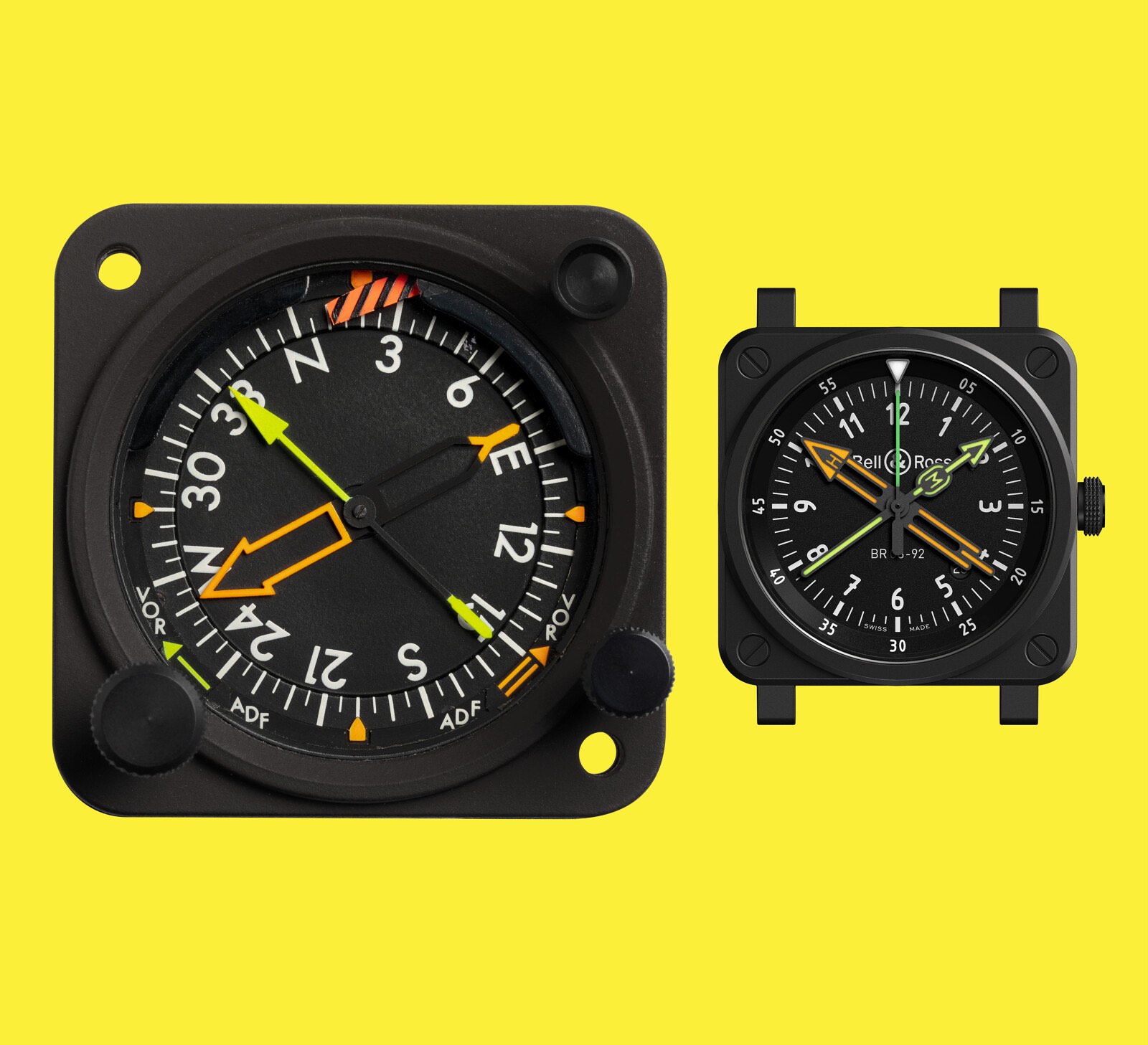

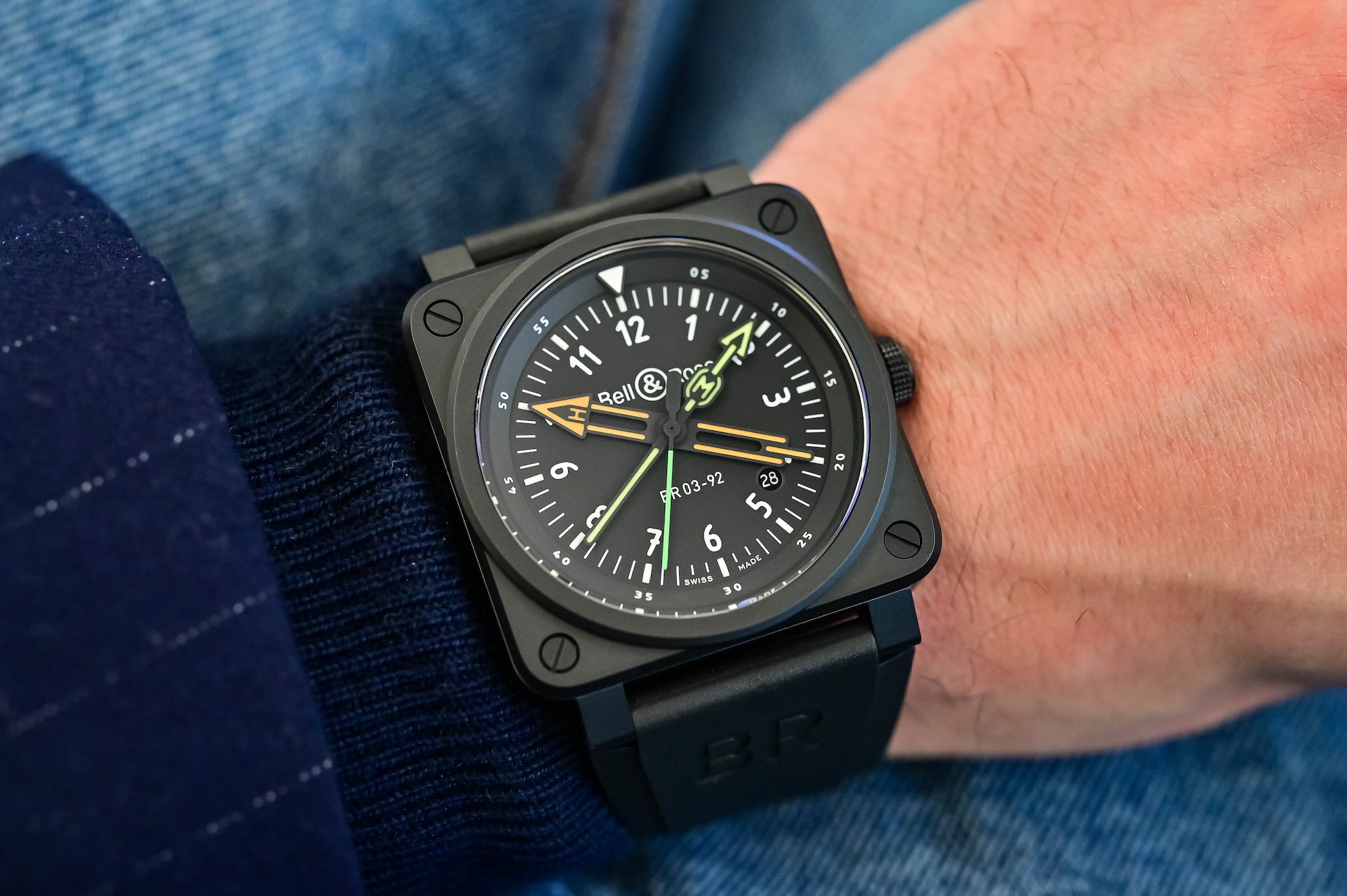


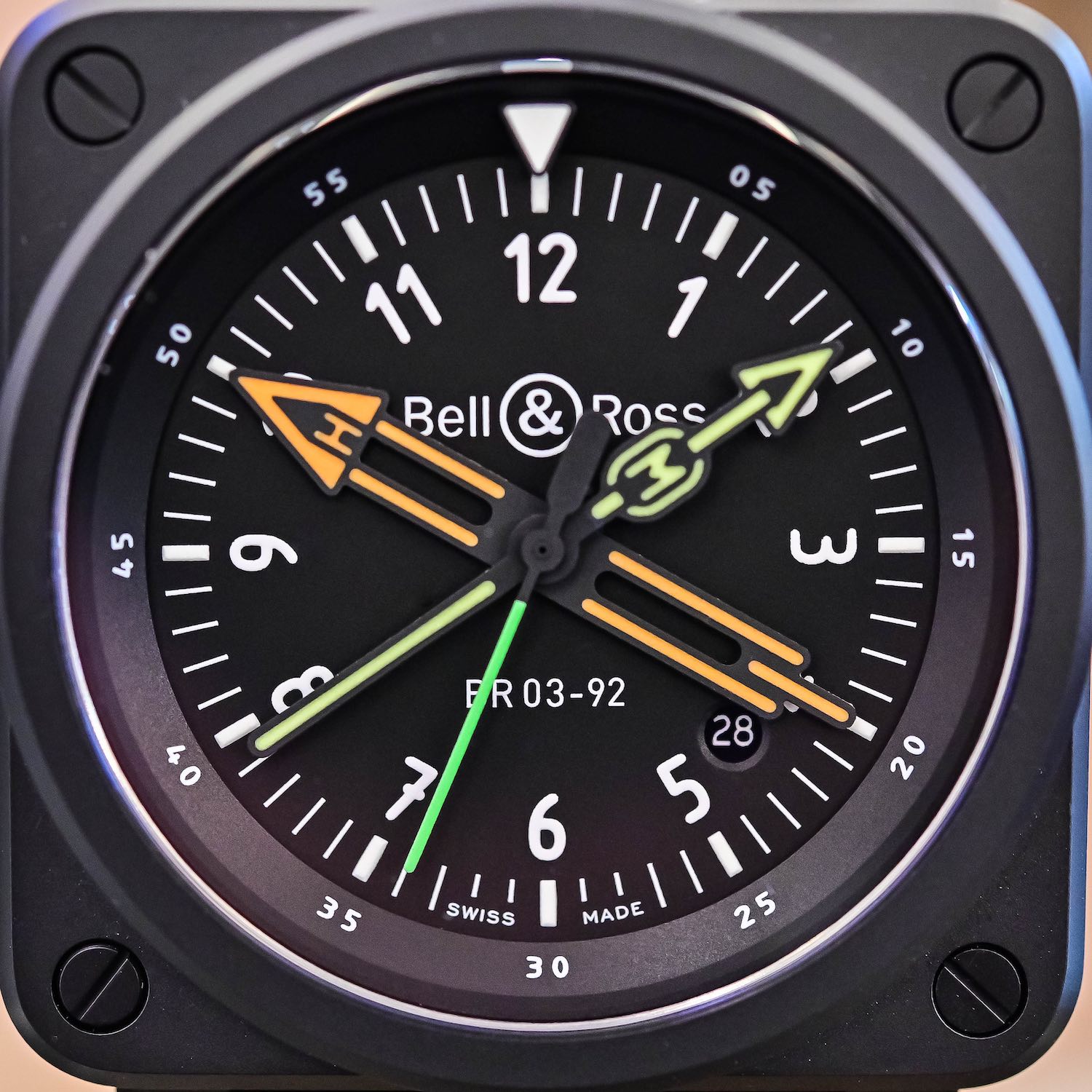
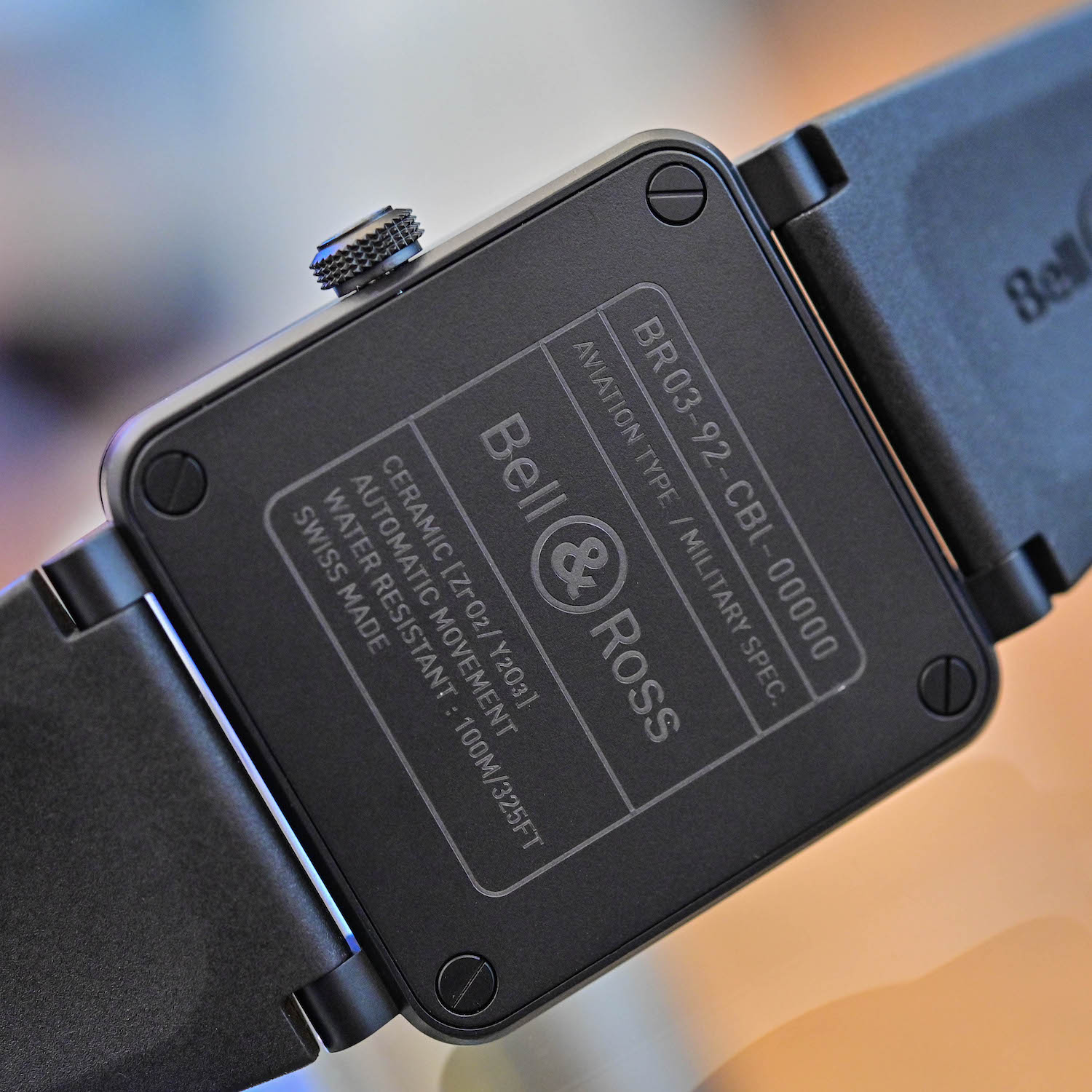



2 responses
At this price this should be dlc, not Pvd , unless you like the beat to hell look ? Some do !
It’s a ceramic watch. Only the clasp is steel with PVD.